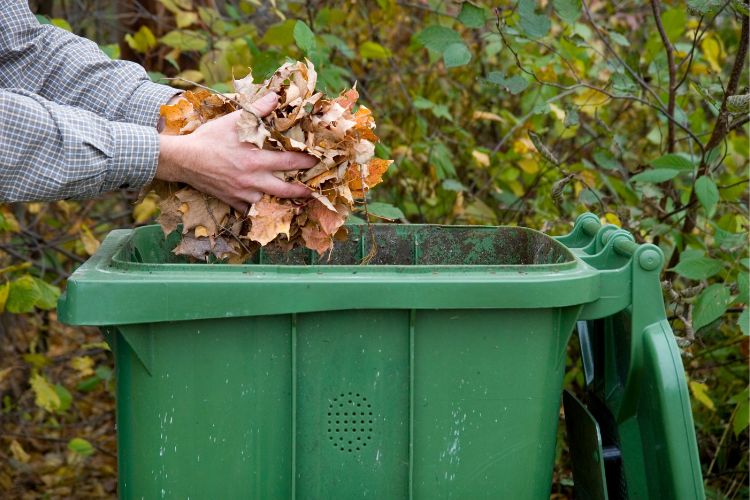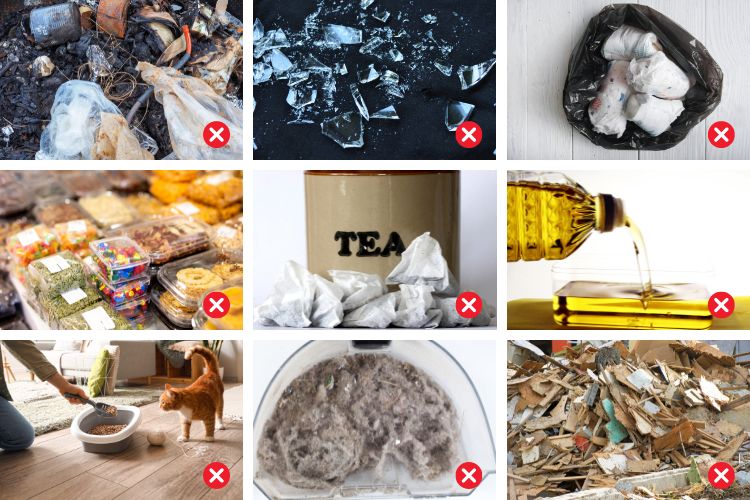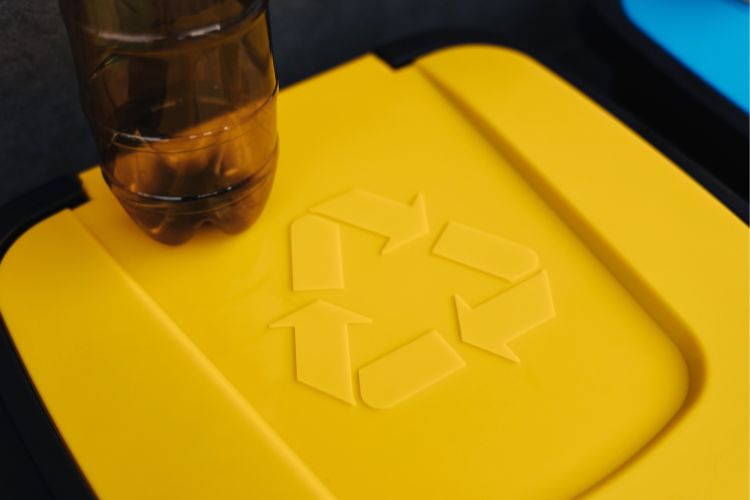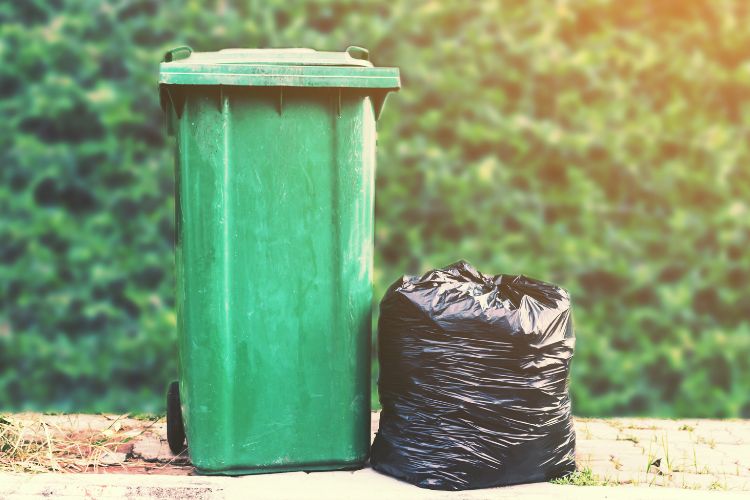Rubbish removal services are vital to maintaining residences and businesses in the community. To create the most effective waste disposal system, there are multiple bins, each designed for specific types of rubbish. On this page, we’re providing information on what your green bin is for and the types of rubbish that go in it (don’t worry, we’ll tell you what goes in recycling bins and regular waste bins as well).

What is a Green Bin?
A green bin, otherwise known as a food and garden organics bin, is a rubbish bin with a lime green lid dedicated to the waste collection of compostable matter, such as food scraps, vegetable and fruit leftovers, lawn clippings, plants and more. Like your other bins, your green bin will be collected on your street’s designated rubbish collection day. The purpose of these bins is to minimise landfill and support sustainability.

What is a Kitchen Caddy?
A kitchen caddy is a smaller container that many families and residents have in their kitchen. It’s a convenient way to collect any compostable waste to transfer to your main green bin later. These are particularly useful for anyone living in an apartment or complex sharing a green bin with others.

What Can Be Placed in a Green Bin in Melbourne, Victoria?
Garden waste bins or green bins have a lime green lid and can be used for the following:
- Garden waste, garden organics and pruning, including twigs, leaves, flowers and weeds
- Grass clippings, lantana, weeds, tree nuts and leaves
- Straw and hay
- Food organics and food waste, including fruit, vegetables and solid dairy products (cheese, milk)
- Meat, fish and bones
- Soft seafood shells (prawns, shrimps, crayfish, lobsters)
- Food scraps, including pasta, fruit, bread, rice, and eggshells
- Coffee grounds and tea leaves
- Spoiled and rotten food.
Areas and facilities outside Melbourne may have their own policies, so check with your local council if you’re unsure. In many areas, green-lidded bins are specifically for green waste and not food.
How to Properly Dispose of Waste in a Green Bin
To maintain the integrity and effectiveness of the green bin, it’s important to use it only for compostable matter. Some tips to keep in mind when using your green bin include:
- Do not use plastic bin bags, liners or packaging when disposing of your green waste.
- Double-check that there isn’t any inorganic matter within your green waste before disposing of it.
- Cut larger palm branches and items into smaller pieces, if possible.
- Time your mowing to close before your collection day.
- Teach children about what things go in the green bin.

What Not to Put in a Green Bin
Knowing what should go into your green bin is essential, but knowing what shouldn’t be thrown in there is just as important. To help you dispose of your rubbish correctly, we’ll rundown where other rubbish should be thrown.
Everything you throw into your regular rubbish bin will be placed in a landfill, so try to recycle or use your green bin whenever possible.
Your landfill bin has a red lid and is designed for household rubbish that is unsuitable for composting or recycling. The following should go into your regular rubbish bin:
- General waste
- Broken window glass
- Nappies
- Wax-coated, glossy paper
- Food packaging, unless it is recyclable
- Pet or animal manure
- Plastic bag and soft plastic
- Dog poo
- Tea bags, coffee pods and coffee cups
- Hard seafood shells
- Cooking oil and other liquids
- Kitty litter or similar products for pets
- Any paper towel or tissue used for cleaning.
- Vacuum dust
- Treated or painted timber
If you don’t have a food and garden waste service, you must throw your food scraps in the landfill bin.

Recycling bins have a yellow lid and are dedicated to recyclables. These items should go into your recycling bin:
- Paper and cardboard
- Aluminium cans and foil, steel cans and trays
- Glass jars, bottles and lids
- Rigid household plastics and their lids. This includes milk bottles, soft drink bottles, yoghurts, washing detergent bottles and similar products.
Most local councils offer a recycling guide to their communities, so get in touch with the council in your region for more specific details.
The following should NOT be put in any bin and need to be taken directly to a disposal site:
- e-Waste
- Car batteries
- Fuel, gas or any combustible materials
- Chemicals
- Soil, earth or clay
How Often Should a Green Bin Be Emptied?
Green bins will be emptied every week or fortnight on your neighbourhood’s designated bin collection day. Be sure to avoid placing your bin on any public footpath to allow it accessibility for passers-by. You’ll also need to ensure your bins are at least 30 cm apart from each other and 1 m away from any power poles, trees or structures in the surrounding environment.

How to Determine When a Green Bin Needs to Be Emptied
As part of the Melbourne waste collection service, your bins will be collected between 6 am and 4 pm on your assigned service day. If you’re unsure what your collection day is, you can check on the Melbourne City Council’s website or contact them directly.
What to Do if a Green Bin is Overflowing
While green bins provide a valuable service to communities across Australia, they are limited in size, and there will be times when you’ll have too much green waste. Perhaps you’re removing trees, doing a major landscaping project, or just having more clippings and trimmings than usual. You can hire a skip bin to remove your waste for you, saving the hassle of doing it yourself or having a mess on your property.
What to Do if a Green Bin is Damaged
It’s generally recommended that you don’t repair a bin yourself and that you report it to your local council. Depending on the severity of the damage, the council will organise for the bin to be either repaired or replaced, free of charge.

How to Get a Replacement Green Bin
If your bin is stolen, damaged or needs to be replaced, you should contact Melbourne City Council and organise a replacement. This is also a free service.
What to Do With a Green Bin After Moving
Green bins can be transferred from one property to another, provided you’re moving somewhere in Melbourne. Talk to your council to arrange this.
When Your Green Bin is Not Enough, What Can You Do?
Are you planning a big landscaping project? Perhaps you find the green bin isn’t quite enough when you trim your hedge or mow the lawn. A skip bin is the perfect solution for projects that require larger collections, including spring cleans, removing building materials and any large loads that need to be removed. Our team will remove the skip bin from your property once full and dispose of your waste in the proper, most environmentally responsible way.
Best Price Skip Bins is the only name to remember when hiring a skip bin. Save yourself the hassle of multiple trips to the dump and hire a skip today. Get in touch with our friendly team to organise a skip bin hire.
